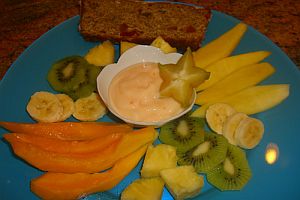
This is all about an article authored by Mari Anne-Alanzman and published by learning Rx.net.Here I reproduce the report verbatim in wider interest of children’s health in this part of the globe.
RECENTLY, THERE HAS BEEN RENEWED INTEREST in the question of whether dietary interventions can be useful for children with Attention Deficit Hyperactivity Disorder (ADHD). This article is not intended to be a review of the relative merits of different approaches, but rather a road map for how to implement approaches for which there is some positive evidence, safely and effectively. ADHD is not caused by your child’s diet, but increasing evidence suggests that some symptoms, particularly mood and self-control, may be affected by what she or he eats.
Eating and nutrition in children

The US Department of Agriculture provides Dietary Guidelines for Americans about every five years. In 2005, the familiar Food Guide Pyramid, showing the recommended number of servings per day for each food group, was modified and replaced by the first of two icons. MyPyramid showed portion sizes in cups and ounces instead of number of servings, with tables of specific recommendations for different age groups. MyPyramid was replaced by MyPlate in June 2011.
MyPlate is a simple guide showing that for each meal, one-half of the plate should consist of fruits and vegetables, one-quarter of protein, and one-quarter of carbohydrates, along with a serving of dairy or calcium-rich substitute.
Highlights include:
- Emphasis is placed on vegetables, fruit, whole grains, and low-fat dairy products.
- At least half of grain intake should come from whole, not processed, grains.
- Daily protein should come from a variety of lean meats and poultry, fish, cooked dry beans, eggs and nuts.
- Some oil is important for health, and should ideally come from fish, nuts, and liquid oils.
- Saturated and trans fats, cholesterol, salt and added sugars should be minimized.
The Food and Nutrition Board establishes the recommended daily allowance (RDA) for each nutrient for each age group. The RDA is the amount of a given nutrient that meets the needs of over ninety-seven percent of the population. Some nutrients do not have an RDA because insufficient information is available. RDAs are shown on labels of supplements and supplemented foods. Will eating according to these guidelines help ADHD? Possibly.